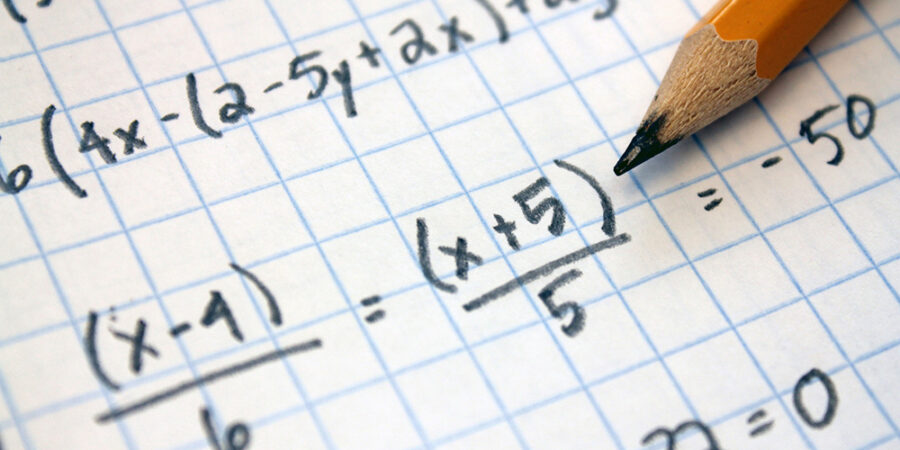Mastering algebra is a key milestone for every GCSE Maths student. It not only strengthens your logic and reasoning skills but also opens the door to advanced mathematical problem-solving. In this comprehensive guide, we’ll walk you through solving both linear and quadratic equations, step by step, using clear examples and methods that align with UK curriculum standards. Whether you’re aiming for a Grade 4 or targeting a Grade 9, this guide will help you build confidence and accuracy.
Explore full GCSE Maths tutoring support
Why Algebra Matters in GCSE Maths
Algebra forms a significant part of the GCSE Maths syllabus for both Foundation and Higher tiers. Topics such as simplifying expressions, solving equations, and manipulating algebraic formulas appear frequently in exams by exam boards like AQA, Edexcel, and OCR.
Understanding how to solve linear and quadratic equations is crucial because:
- These are often multi-mark questions.
- They are the basis for many real-world and applied problems.
- They strengthen algebraic thinking, which is essential for A-Level Maths and STEM fields.
🔹 What Is a Linear Equation?
A linear equation is an equation where the highest power of the variable (usually x) is 1. These equations form a straight line when plotted on a graph.
✅ General Form
ax + b = cWhere:
a,b, andcare constantsxis the variable you are solving for
🔸 Steps to Solve Linear Equations
Let’s take an example:
2x + 5 = 13
Step 1: Subtract 5 from both sides
2x = 13 - 5 2x = 8
Step 2: Divide both sides by 2
x = 8 ÷ 2 x = 4
Tip: Always perform the same operation on both sides to keep the equation balanced.
🧠 Common Variations of Linear Equations
- Variables on both sides:
3x - 2 = x + 6 - Using brackets:
2(x - 3) = 14 - Equations involving fractions:
(x/3) + 2 = 5
🔹 What Is a Quadratic Equation?
A quadratic equation is a polynomial of the second degree, meaning the variable is raised to the power of 2. It takes the form:
ax² + bx + c = 0Where a, b, and c are real numbers and a ≠ 0
Quadratics appear frequently in Higher tier GCSE exams and occasionally in Foundation tier.
🔸 Methods to Solve Quadratic Equations
There are 4 main ways to solve quadratics:
1. Factorising (Most common in exams)
Example:
x² + 5x + 6 = 0
Step 1: Look for two numbers that multiply to 6 and add to 5 → (2 and 3)
Step 2: Rewrite: (x + 2)(x + 3) = 0 Step 3: Solve:
x + 2 = 0 → x = -2
x + 3 = 0 → x = -3
2. Completing the Square
Useful when a = 1 and b is even.
Example:
x² + 6x + 5 = 0
Step 1: Rewrite as (x + 3)² - 4 = 0 Step 2: Add 4 to both sides: (x + 3)² = 4 Step 3: Take square roots: x + 3 = ±2 Step 4: Solve: x = -1, x = -5
3. Quadratic Formula
Use when the equation cannot be factorised easily.
x = (-b ± √(b² - 4ac)) / 2aExample:
x² - 4x - 5 = 0
Here, a = 1, b = -4, c = -5
x = (4 ± √(16 + 20)) / 2
x = (4 ± √36) / 2
x = (4 ± 6) / 2 → x = 5 or x = -1
4. Using a Calculator (Higher tier only)
- You can use the quadratic solver function on scientific calculators like Casio fx-83GTX or fx-991EX.
❗️Common Quadratic Equation Mistakes
- Forgetting to set the equation to 0 before solving
- Sign errors when factorising
- Applying the wrong formula values (a, b, c)
- Forgetting the ± in the quadratic formula
Tip: Always double-check your final answer with substitution.
📝 Practice Question Examples
Linear Equation:
Solve: 3(x - 1) = 15 Solution:
- Expand:
3x - 3 = 15 - Add 3:
3x = 18 - Divide:
x = 6
Quadratic Equation:
Solve: x² + 7x + 10 = 0 Solution: Factorise to (x + 2)(x + 5) → x = -2 or -5
📚 Real-Life Applications of Algebra
Understanding linear and quadratic equations helps with:
- Finance & budgeting (linear growth models)
- Engineering & physics problems (parabolic motion)
- Construction measurements
- Programming & algorithm design
🎯 How to Improve Your Algebra Skills
- Practice past papers from AQA, Edexcel & OCR
- Use GCSE Maths revision guides (e.g., CGP, Collins)
- Watch video tutorials on YouTube or BBC Bitesize
- Work with a qualified tutor for feedback and exam strategy
Get tailored help with GCSE Maths Algebra
✅ Final Thoughts
Algebra doesn’t have to be intimidating. With structured revision, smart techniques, and consistent practice, you can confidently tackle linear and quadratic equations in your GCSE exams.
Focus on mastering each method step-by-step, understand when to apply which technique, and don’t shy away from using your calculator when permitted.
For full support, lesson plans, and one-to-one tutoring, visit GCSE Maths Tutor and take the next step in your Maths journey.


